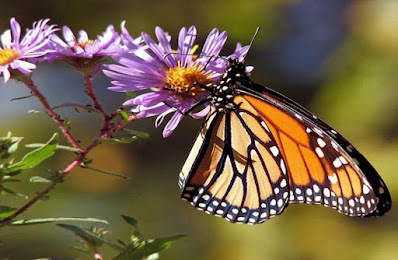Swallowtail. Spicebush. Red Admiral. Painted Lady. Fritillary. Among all the enchantingly named butterflies of Pennsylvania, it’s the Monarch that flutters our hearts.
With its big, orange-and-black stained-glass wings, it’s the first butterfly children can name.
For grownups, just the sight of them flitting among the fragrant milkweed on a warm afternoon can raise a smile and kindle memories of summers gone by. Even their pudgy, clown-colored caterpillars are delightful.
Yet, recently, you may have wondered, “Where are all the Monarchs?”
In fact, according to the Center for Biological Diversity, Monarch butterflies are in steep decline. Over the last 20 years, their numbers have dropped by 85 percent.
Habitat loss is a big part of the problem. Acres of lawn, pavement, warehouses and other buildings now cover the natural fields of goldenrod, ironweed, phlox, Joe Pye weed, and other food sources that butterflies rely on.
Loss of milkweed, the only plant on which the Monarch caterpillar thrives, compounds the problem.
Lawn-care companies, business parks, and even well-intentioned gardeners who use bug killers and weed killers make things even worse.
That’s because bug sprays don’t distinguish between harmful beetles and beneficial butterflies. Weed killers don’t distinguish between stilt grass and milkweed.
Climate change, with its boom and bust cycle of rainfall, stresses and harms the butterflies’ food sources.
Small changes in your home landscape can help. Reduce or eliminate the use of insecticides and herbicides in your own landscape.
Plant a variety of native flowering plants that bloom in succession over spring, summer, and fall to help support all kinds of pollinators, from hummingbirds to Monarchs.
Set aside space in a sunny spot to grow milkweed, the nursery of this butterfly.
You may be rewarded with the unforgettable experience of seeing a Monarch emerge from its chrysalis, dry its wings, and take its first flight.
At the very least, you’ll enjoy the sweet, summery smell of milkweed flowers next season.
For more information about saving the Monarch, visit the Lackawanna County Master Gardener and the Penn State Extension Monarchs and Milkweed webpages.
The Nature at Risk series is published by Brodhead Watershed Association.
For more information on programs, initiatives and other upcoming events, visit the Brodhead Watershed Association website or Follow them on Facebook. Click Here to sign up for regular updates from the Association. Click Here to become a member.
Resource Links:
-- DCNR ‘Let It Grow’ Educational Video
-- Evaluate Your Property For Honey Bees With Penn State’s Beescape
-- Pollinator Gardens: Help Encourage Ecological Diversity In Your Own Backyard [Videos]
-- Gardening For Butterflies: Penn State Extension
-- Planting For Pollinators: Penn State Extension
-- Penn State Extension Master Gardeners
-- Penn State Pollinator Garden Certification
-- Audubon PA: Bird Habitat Recognition Program
-- Chesapeake Bay Sustainable Landscape Professional Directory
Related Article:
-- Clean Water Is Up To You: Brown Lawn? Here’s How To Really Go Green! - By Brodhead Watershed Association, Monroe County [PaEN]
[Posted: August 31, 2022] PA Environment Digest


No comments:
Post a Comment